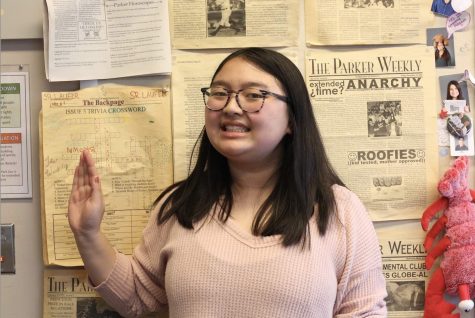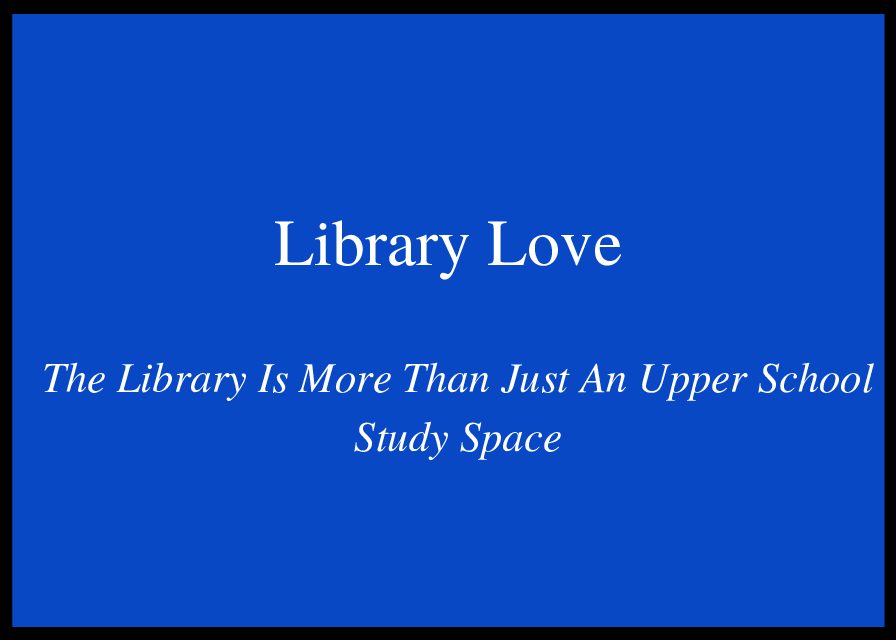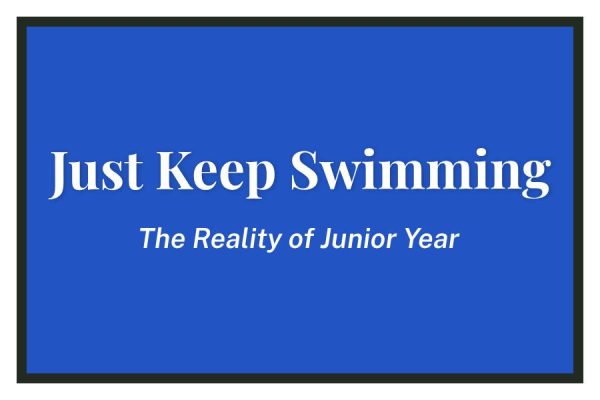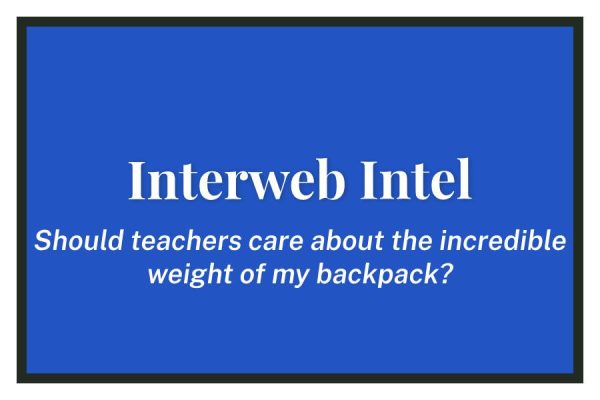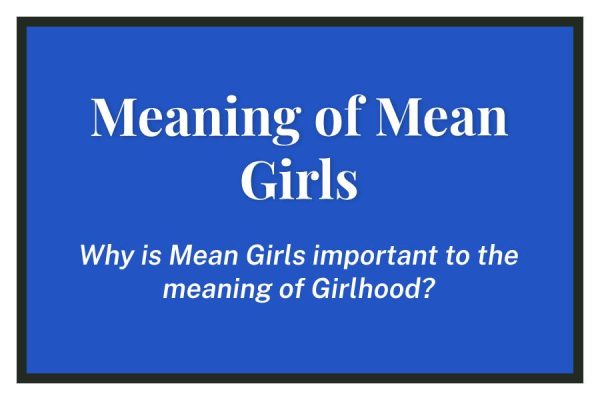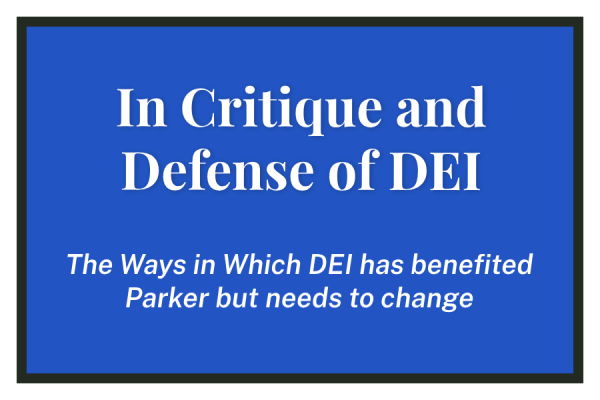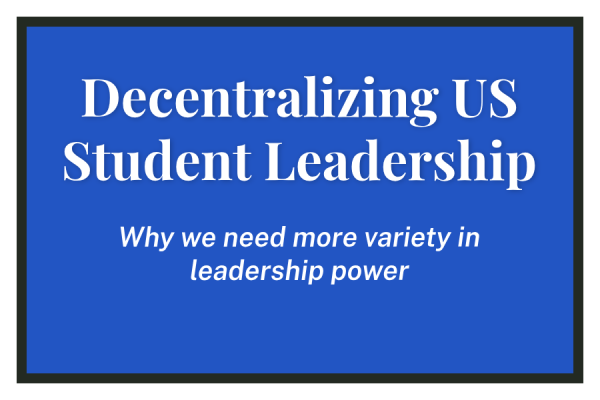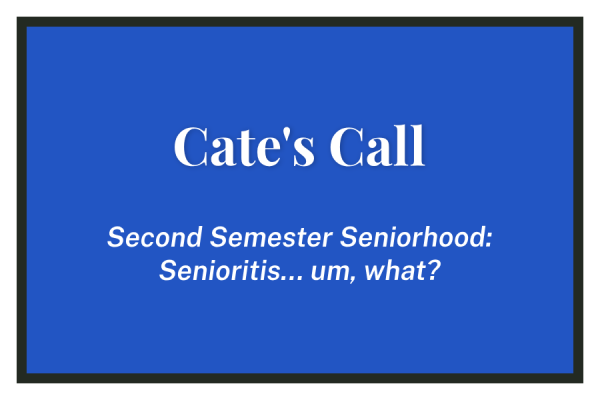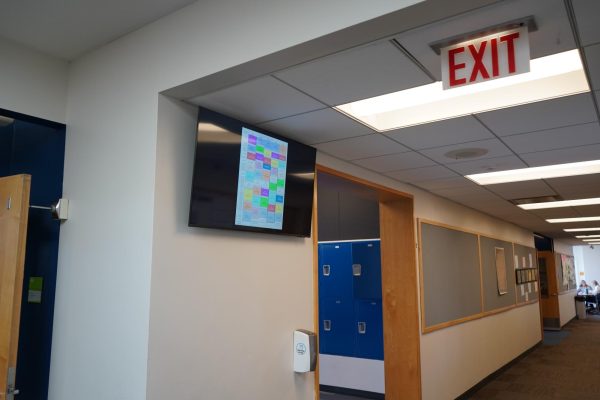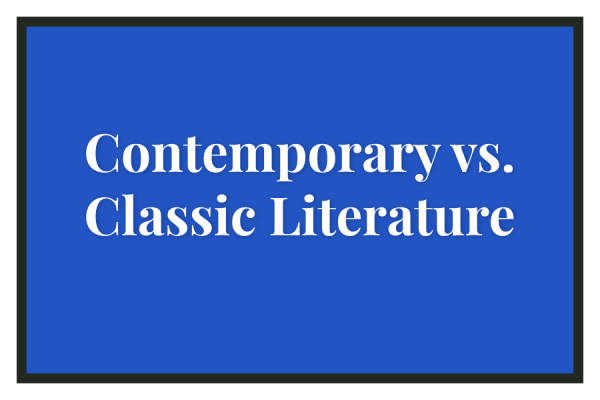Library Love
The Library Is More Than Just An Upper School Study Space
During the sophomore town hall on Friday, November 5, one student referred to the library with air quotes, insinuating that Parker’s library is not an actual library. The Kovler Family Library is clearly a library — by definition, it has books — but it’s so much more than that too.
A collection of books is fundamental to define a library, yet the Upper Schoolers are barely checking out any books. While I personally know that it’s difficult to manage schoolwork and personal reading, it shocked me to learn that on December 8, a total of seven books were checked out by Upper Schoolers at that time. Not seven checked out only that day; seven total books not physically in the library. If seven Upper School students had one book checked out each, that’s 2% of Upper School students. For the rest of the school, there are 150% more books checked out than the total number of students in JK through eighth grade.
I know I would be a hypocrite to say that every Upper School student should have a book checked out from the library, but I believe we are severely underutilizing the library. The space itself has so much more to offer than just seating and chargers, like 3D printers, a laser and Cricut cutters, sewing machines, and of course physical books. Aside from tangible things and machines, the library offers National Novel Writing Month, book clubs, VR playgrounds, crafting sessions, and other workshops.
These resources don’t only serve the Upper School but the rest of the Parker community as well, especially younger students. Complaints about the library frequently call out the younger students for noisiness but fail to recognize how the library serves them too. According to Library and Information Services Specialists Mary Catherine Coleman and Annette Lesak, there are 36 Lower and Intermediate School classes in the library every week, on top of as many as four Middle School classes a day. These classes teach skills that I as an Upper Schooler realize I take for granted—literacy, researching, coding. We shouldn’t complain about the library and all of its noise unless we understand that this noise is learning and creating.
In these Lower and Intermediate School classes, students are coding and designing 3D ecosystems to view on the VR headsets, making games and more with the laser cutter, building robots, and creating cardboard arcade machines. Upper Schoolers themselves are able to not only utilize the library’s resources outside of class but also for classes. One French class is using the laser cutter, 3D printer, sewing machines, and more in the maker space. The Climate Science and Environmental Politics class used the Oculus Quest VR headsets to explore the jungles and reefs affected by climate change.
To keep these classes and workshops running smoothly, the librarians set up the technology and materials, plan projects, and create new resources. They’re answering questions and helping students find everything from a book to a stapler. They introduce teachers to new technology, help prepare for faculty meetings, and support classes in every division.
The librarians do also enforce rules in the library, but it’s not any different than a teacher telling you to put your mask on in the hallway. In terms of eating in the library, we already were given that privilege and we lost it. There’s definitely a seating and eating space problem in the school, but it’s not the library’s problem to fix. Masking and distancing requirements in the study rooms are due to the pandemic, and the librarians have been receptive to feedback on those rules. Through student government, the limit of students in each study room has increased to three and students alone in a study room can take their mask off.
This flexibility isn’t just for pandemic policy: for Morning Flex periods, the librarians designated the west side of the library for a quiet space to study, so while some students are playing Rocket League, others can work on math homework. As I talked to two of the librarians, they underscored their willingness to listen and implement student feedback.
I’ve attended four different schools, two of which besides Parker that had cross-divisional libraries yet did not have the resources nor opportunities that Parker’s library offers. The other did not have a library. My two previous schools prior to Parker had libraries which had fluorescent lighting and mid century modern wood everywhere. They were slightly scary to be alone in, and they were just walls and walls of books. They weren’t collaborative spaces either, and while there may have not been noisy lower schoolers, students studying with friends couldn’t talk louder than a whisper. These are still better than the libraries of some of my friends at other schools (private and public), whose libraries lack innovative technology, books, or existence at all.
The library can’t be another part of Parker that we just take for granted and only complain about. Unlike other hot-topic issues in the school, the library is a space that genuinely accomplishes the Parker mission. Through the books we can learn about history and society and empower each other to tell our unique stories. The K-12 space encourages community. Books ranging from picture books to novels about LGBTQ+ stories, race, gender, and more encourage inclusivity and growth. The maker space and classes that work in the library are uniquely able to foster collaboration and creativity—the whole “learning by doing” concept that Colonel Parker was all about.
As a student, I use the library’s resources every day as a spot to think, to rest, to create, and to collaborate. The library—from the books, machines, and chairs to the librarians and peers I find there—does so much for me. It serves hundreds of students every day, and the least we can do is respect it, whether that be providing feedback to make the space better, taking care to leave the space tidy, or coexisting with the other users of the space.
